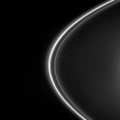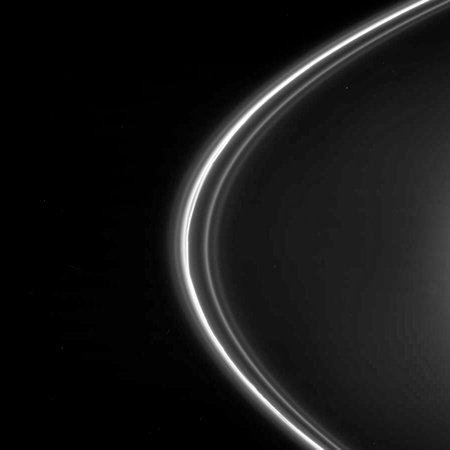Ta'ãnga:PIA07712 - F ring animation.gif
PIA07712_-_F_ring_animation.gif (450 × 450 píxeles; tamaño de archivo: 3,43 MB; tipo MIME: image/gif, bucleado, 65 frames, 26s)
Marandurenda rembiasakue
Ejopy peteĩ ára/aravo rehe rehecha hag̃ua pe marandurenda ojehechaukaháicha upe jave.
| Ára/Aravo | Michĩháicha | Tuichakue | Puruhára | Jehaimombyky | |
|---|---|---|---|---|---|
| ko’ag̃agua | 19:51 24 jasypateĩ 2007 |  | 450 × 450 (3,43 MB) | WolfmanSF | Reduce file size by deleting alternate frames. Double delay setting to maintain speed of animation. |
| 09:48 23 jasypateĩ 2007 |  | 450 × 450 (6,44 MB) | WolfmanSF | truncate down to 122 frames | |
| 02:00 23 jasypateĩ 2007 |  | 450 × 450 (6,91 MB) | WolfmanSF | further truncation down to 131 frames | |
| 09:02 22 jasypateĩ 2007 |  | 450 × 450 (7,12 MB) | WolfmanSF | ||
| 10:01 21 jasypateĩ 2007 |  | 450 × 450 (9,01 MB) | WolfmanSF | {{Information |Description=This movie sequence from Cassini shows dark drapes in the inner strands of the F ring caused by the gravitational influence of the shepherd moon Prometheus (102 kilometers, 63 miles across). Prometheus appears first in the sequ |
Marandurenda jeporu
La siguiente página usa este archivo:
Marandurenda jepuru opaite tembiapópe
Ko'ã ambue wiki oipuru ko marandurenda:
- Jeporu af.wikipedia.org rehe
- Jeporu ar.wikipedia.org rehe
- Jeporu be.wikipedia.org rehe
- Jeporu bn.wikipedia.org rehe
- Jeporu cs.wikipedia.org rehe
- Jeporu de.wikipedia.org rehe
- Jeporu en.wikipedia.org rehe
- Jeporu eo.wikipedia.org rehe
- Jeporu fa.wikipedia.org rehe
- Jeporu fr.wikipedia.org rehe
- Jeporu hy.wikipedia.org rehe
- Jeporu id.wikipedia.org rehe
- Jeporu it.wikipedia.org rehe
- Jeporu lb.wikipedia.org rehe
- Jeporu mk.wikipedia.org rehe
- Jeporu pt.wikipedia.org rehe
- Jeporu ro.wikipedia.org rehe
- Jeporu ru.wikipedia.org rehe
- Jeporu sk.wikipedia.org rehe
- Jeporu tr.wikipedia.org rehe
- Jeporu uk.wikipedia.org rehe
- Jeporu zh-classical.wikipedia.org rehe
- Jeporu zh.wikipedia.org rehe



